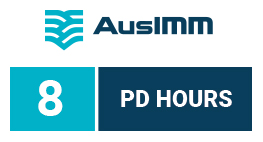Kriging and Kriging Neighborhood Analysis | Training course
Learn how to use KNA to optimize the quality of your mineral resource estimates
Objective
This 1-day course is a sound and complete presentation to the notion of quantitative optimisation of estimation search neighbourhoods.
Key Features
Defining a neighborhood for estimation involves specifying the orientation and dimensions of the three dimensional volume used to select the samples used in estimation as well as specifying the actual number of samples to be used in the estimation process.
Correctly defined search neighborhoods are essential to the estimation process as they help reduce the risk of conditional bias (overestimation of high grades and underestimation of low grades). The course looks at how the quantitative measures provided by the geostatistical framework to quantify the quality of estimation may be used to help optimise the definition of the search neighborhoods.
Who should attend
This course is aimed at resource geologists wanting to develop their understanding of the concepts, applications and benefits of quantitative kriging neighbourhood analysis.
Course content
An ultra rapid referesher on linear geostatistics
- Exploratory Data Analysis
- Experimental Variography
- Variogram Modeling
Using the variogram model to optimise:
- The block size,
- The orientation and dimensions of search volumes,
- The number of samples.
Automation of testing and reporting in Isatis
- Journal Files
- Summary Graphs
Prerequisites
Notion of Linear Geostatistics (domaining, variography).


